Résultats de recherche de titre
Articles 1501981 à 1502000 sur 1502008
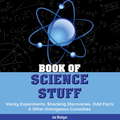
Book of Science Stuff
Par Joe Rhatigan. 2010
Rather than paying tribute to the great discoveries and discoverers, the BOOK OF SCIENCE STUFF takes a fun look at…
the silly, hilarious, horrible underbelly of science. In a series of enjoyable short accounts, it focuses on the failures, reveals the petty squabbles, and introduces the "nerds" who labored in labs around the world. Check out the blunders--like scary Cold War experiments, idiotic research grants, and space study stupidity; meet the "Sigmund Frauds" and the real Frankensteins; and peek into the secret lives of scientists (if you dare). See how science makes the world go round--and directly affects everyone's daily lives. Scrutinize Hollywood's presentation of science on film and TV. And ponder the ways science sometimes pulls the wool over our eyes.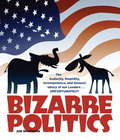
Pizza kings, mama bears, fake PAC ads, and obscene tweets: Today's politics seem to have grown crazier--and more contentious--than ever.…
But is it really any weirder now than it ever was? In a world filled with corruption, lies, and illicit affairs, where the news regularly serves up politicians' gaffes, crimes, and screwups, it's hard to imagine things were ever stranger. Well, guess what? America has a long history of bizarre politics. . . and it's all here We invite you into the political loony bin, where you'll encounter dozens of really unlikely candidates, follow campaign trail madness, meet far too many contenders with foot-in-mouth disease, and learn about a host of false promises and lies meant to lure (presumably gullible) voters.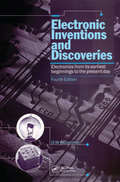
In a remarkably short time, electronics has penetrated almost every aspect of modern life and the pace of development in…
the field shows no sign of slackening. One of the first books to cover electronic inventions in depth, Electronic Inventions and Discoveries: Electronics from Its Earliest Beginnings to the Present Day, Fourth Edition traces the development of electronics from its earliest beginnings to the present day. Spanning a period of two and a half centuries, the book presents a mini-encyclopedia full of valuable information on practically all inventions in electronics from 1745 to 1996. This fourth edition has been brought up-to-date and made more attractive by a complete redesign while still maintaining the successful features of previous editions. The first nine chapters supply concise yet comprehensive histories of the main areas of the subject. Subsequent chapters provide a list of inventions by subject and succinct descriptions of each invention in date order with over 1,000 references. The book concludes with a list of acronyms and abbreviations, a list of books on inventions and inventors, and a comprehensive index.During his seventy years in the field, the author has collected a variety of published data to form an up-to-date systematic review of the major developments in electronics and the pattern of advances in electronic techniques. The book forms an essential source of reference to practicing engineers wishing to broaden their knowledge. Teachers and students who require a sound background and understanding of electronics will also find the book invaluable. Written in an easily understood largely nontechnical language, this fascinating and authoritative history of electronic developments will be of great interest to electronic hobbyists and general science readers.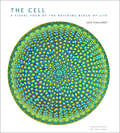
The Cell: A Visual Tour of the Building Block of Life
Par Jack Challoner. 2015
“Handsome and elegantly designed, this tour through the cell’s history and diversity in form and function is a delight to…
peruse . . . stunning.” —American ScientistWith The Cell, Jack Challoner treats readers to a visually striking tour of these remarkable molecular machines. Most of the living things we’re familiar with—the plants in our gardens, the animals we eat—are composed of billions or trillions of cells. Most multicellular organisms consist of many different types of cells, each highly specialized to play a particular role—from building bones or producing the pigment in flower petals to fighting disease or sensing environmental cues. But the great majority of living things on our planet exist as single cell. These cellular singletons are every bit as successful and diverse as multicellular organisms, and our very existence relies on them.The book is an authoritative yet accessible account of what goes on inside every living cell—from building proteins and producing energy to making identical copies of themselves—and the importance of these chemical reactions both on the familiar everyday scale and on the global scale. Along the way, Challoner sheds light on many of the most intriguing questions guiding current scientific research: What special properties make stem cells so promising in the treatment of injury and disease? How and when did single-celled organisms first come together to form multicellular ones? And how might scientists soon be prepared to build on the basic principles of cell biology to build similar living cells from scratch?“Small really is beautiful: Psychedelic images show the inner workings of cells in stunning detail.” —Daily Mail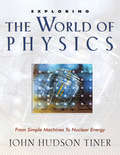
Exploring the World of Physics
Par John Hudson Tiner. 2006
Physics is a branch of science that many people consider to be too complicated to understand. In this exciting addition…
to the ?Exploring? series, John Hudson Tiner puts this myth to rest as he explains the fascinating world of physics in a way that students from elementary to high school can comprehend. Did you know that a feather and a lump of lead will fall at the same rate in a vacuum? Learn about the history of physics from Aristotle to Galileo to Isaac Newton to the latest advances. Discover how the laws of motion and gravity affect everything from the normal activities of everyday life to launching rockets into space. Learn about the effects of inertia firsthand during fun and informative experiments. Exploring the World of Physicsis a great tool for students of all ages who want to have a deeper understanding of the important and interesting ways that physics affects our lives and is complete with illustrations, chapter questions, and an index.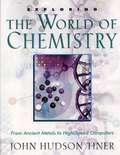
Exploring the World of Chemistry
Par John Hudson Tiner. 2001
Chemistry is an amazing branch of science that affects us every day, yet few people realize it, or even give…
it much thought. Without chemistry, there would be nothing made of plastic, there would be no rubber tires, no tin cans, no television, no microwave ovens, or something as simple as wax paper. This book presents an exciting and intriguing tour through the realm of chemistry as each chapter unfolds with facts and stories about the discoveries and discoverers. Find out why pure gold is not used for jewelry or coins. Join Humphry Davy as he made many chemical discoveries, and learn how they shortened his life. See how people in the 1870s could jump over the top of the Washington Monument. Exploring the World of Chemistry brings science to life and is a wonderful learning tool with many illustrations, biographical information, chapter tests, and an index for easy referencing.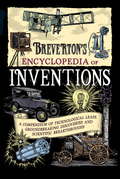
Invention and innovation are what distinguish the human race from all of the other species on Earth. Throughout history the…
imagination and pioneering spirit of human kind has compelled us to question why we do things in a certain way and, more importantly, how we can do things better. Celebrating the ingenuity, creativity and resourcefulness that has led to some of the most amazing technological leaps through the ages, Breverton's Encyclopedia of Inventions examines the key innovations and breakthroughs of all time and the genius behind them. Starting with the building of the pyramids in ancient Egypt and the discovery of the solar system, moving through surgery, dynamite and rockets, to modern technology such as the smart card and genetic engineering, Terry Breverton springs many surprises. He uncovers fascinating and little-known facts: for example, that Price, not Fleming, discovered penicillin; that Swan, not Edison invented the electric light, and that Wallace, not Darwin first advanced the theory of evolution. Tracing the sheer persistence of brilliant men and women across the globe, who fought the prevailing ideas of their times and advanced technology, Breverton's Encyclopedia of Inventions will inspire anyone interested in the history and developments that have changed our lives and shaped our planet's future.
Accidental Inventions (Fountas & Pinnell LLI Gold #Level R)
Par Alison Blank. 2013

The World Beneath Your Feet (Fountas & Pinnell LLI Gold #Level P)
Par Alison Blank. 2013
The Secret World Below. When you stand on the ground, you're standing on the top layer of Earth. As you…
look around, you see all the familiar signs of daily life: plants, animals, people, buildings, cars, sky, clouds. But do you ever stop and think about what might be in the ground beneath your feet? The answer is an astonishing hidden world teeming with life.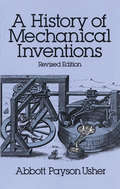
A History of Mechanical Inventions: Revised Edition
Par Abbott Payson Usher. 1954
"The book is without peer in its field." -- American ScientistIn this completely revised and enlarged edition of a classic…
work in the history of technology, a noted scholar explores the importance of technological innovation in the cultural and economic history of the West.Following an introductory discussion of the place of technology in economic history, the author offers a penetrating historical analysis of social change. Within this context he develops a theory of invention based on Gestalt psychology and a concept of social evolution as continuous development from antiquity to the present. Emphasis is placed on the role of economic forces in the development of technology, with scientific concepts also playing an important role in bringing about change.The latter part of the book focuses on the production and control of power in general, and in particular on a number of important operative mechanisms. Thus we read thought-provoking accounts of the technology of textile manufacture from primitive times, of water wheels and windmills, water clocks, and mechanical clocks, and the work of Leonardo da Vinci. The development of printing is carefully studied, not only for its intrinsic interest, but because of its importance for the history of science. Other topics include the production and application of power (1500-1830), machine tools and quantity production, the production and distribution of power since 1832, and the role of Asia Minor as a source of techniques which dominated the Middle Ages and the modern period as well.Thoroughly researched and cogently reasoned, A History of Mechanical Inventions belongs in the library of anyone interested in the history of science and invention, as well as the relationship of technology to economic and social history."Throughout the book there is constant proof of the author's wide learning and varied intellectual interests." -- The New York Times
Swarm (Zeroes Ser. #2)
Par Scott Westerfeld, Margo Lanagan, Deborah Biancotti. 2016

Strong Cold Dead (Caitlin Strong Novels Ser. #8)
Par Jon Land. 2016

The One True Love Of Alice-ann
Par Eva Marie Everson. 2017

No Friend But The Mountains: Writing From Manus Prison
Par Omid Tofighian, Behrouz Boochani. 2019

My European Family: The First 54,000 Years
Par Karin Bojs. 2017

The Hearts Of Men: A Novel
Par Nickolas Butler. 2017

The Gentleman's Guide To Vice And Virtue (Montague Siblings Ser. #1)
Par Mackenzi Lee. 2017

The Shadow City (Five Elements Series #book 2)
Par Dan Jolley. 2017

The City Of Brass: A Novel (The daevabad Trilogy Ser.)
Par S. A. Chakraborty. 2017
